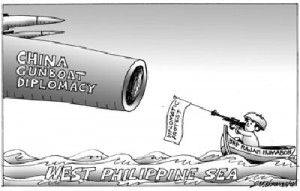The tragedy that struck the Japanese people after the unfortunate meltdown of a power plant in Fukushima, following a giant earthquake and tsunami, may have silenced nuclear energy prophets in the Philippines. But until when? Remember, as Mark and Representative Kimi Cojuangco said, they merely shelved their proposals to revive nuclear power plants in the country.
The Freedom from Debt Coalition has been one of the first to call on the government to drop nuclear plans after the sad incident in Japan. We earlier asked the Aquino administration to remove a section on nuclear revival in its development plan.
Several organizations have already expounded on the dangers of nuclear energy. We stress one more argument that cannot be overemphasized: the total lack of readiness – social, financial, technological, physical and governmental – of our society to confront and overcome a nuclear disaster, in case it happens.
But aside from the proven dangers and risks of nuclear energy, let us try to dissect the roots of the advocacy for nuclear energy: that it is carbon-neutral, that it is cost-efficient and that it is sustainable.
First, the assertion that nuclear energy is a zero-emission technology is false. Nuclear plants do emit carbon, though in lesser quantities than coal- and fossil fuel-powered plants. But nuclear energy sourcing from uranium mining operations, just like other mining activities, involves huge amounts of carbon emissions.
Apart from this, the enrichment facilities, the construction and decommissioning of the plants and the storage of spent fuel require other sources of energy that, more often than not, use the usual fossil fuels. Simply put, advocates of nuclear power are just exploiting the climate crisis for their selfish agenda.
Second, the claim that developing nuclear energy is cost-efficient has been challenged. TIME magazine (“The Real Costs of US Nuclear Power”, 3/25/11) reports that since 2008, proposals to build nuclear reactors have been silently scrapped or suspended in at least nine states in the United States. The reason is not safety concerns nor popular resistance but financial realities. The TIME article cites that very few investors are betting on nuke and that without huge subsidies from the US government, this nuclear industry may have bogged down years ago. If there is any way to cut investment costs in nuclear energy, TIME says, it will have to be done by ignoring safety concerns.
Third, nuclear energy is not sustainable. Uranium, the nuclear energy source, can be found only in five countries: Canada, Australia, Russia, the United States and France, according to the studies of the World Information Service on Energy (WISE). Uranium reserves are only good for about 50 years, considering the current use of the substance.
Energy qualities, like “carbon-neutral,” “sustainable” and “cost-efficient,” are better paired with renewable energy, not nuclear energy.
—RICARDO B. REYES,
president, Freedom from Debt Coalition,
11 Matimpiin St.,
Brgy. Pinyahan, Quezon City


